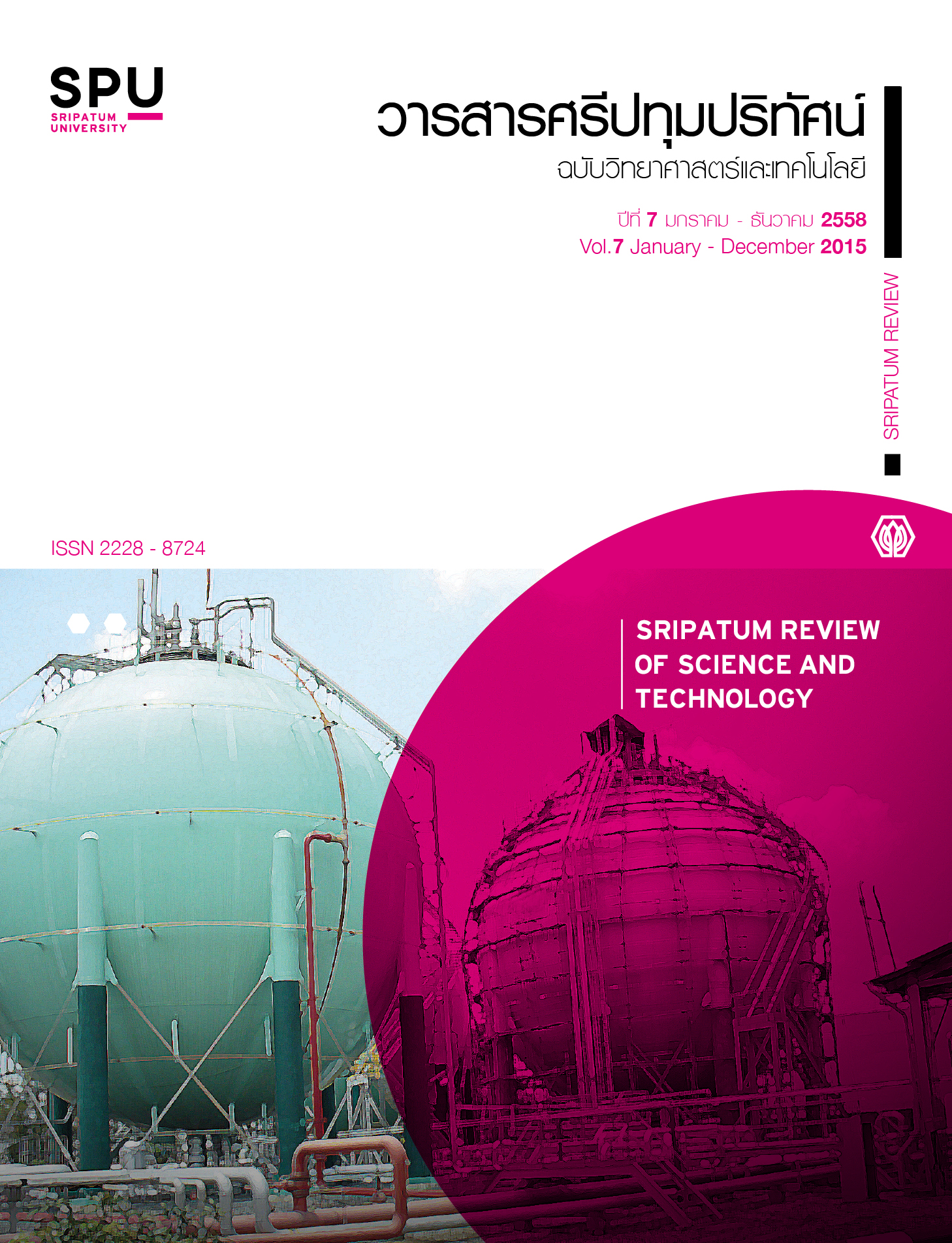COMPARISON STUDY OF SHORT-CIRCUIT CURRENT CALCULATION ACCORDING TO IEC60909 AND IEEE551 FOR OVERCURRENT RELAY SETTING FOR POWER TRANSFORMER IN SUBSTATION
Main Article Content
Abstract
The purpose of this research is to compare the magnitude of short-circuit (SC) currents calculated according to IEC60909 and IEEE551 standards. Time setting and time co-ordination of overcurrent (o/c) relays used for protecting power transformer in substation are based on IEC60909 SC currents. Then, verification of relay operation is performed in case of IEC60909 and IEEE551 SC currents. There are 3 cases, Case 1: Two windings power transformer 115-22 kV Dyn1, Case 2: Three windings power transformer 115-22 kV YNyn0 (d1), and Case 3: Three windings power transformer 115-33 kV YNyn0(d1). The simulation results have shown that the IEC60909 SC currents are 3-10% higher than IEEE551 SC currents in most cases. In some special case, the voltage during fault is 1.05 p.u. whereas source impedance is the maximum value; the IEEE551 SC currents are slightly higher than IEC60909 SC currents, 0.3-1.7%. The differences are due to the transformer impedance correction factor used in IEC60909 and voltage magnitude during fault used in IEEE551, 0.95-1.05 p.u. In PEA substation, overcurrent protection system is based on IEC60909 SC currents. The relay operation and co-ordination conform to the relay time setting and coordination as designed when IEC60909 SC currents are injected. However, they are different when IEEE551 SC currents are injected instead. In most cases, IEEE551 SC currents are less than those of IEC60909. These result in longer operation time in most cases. In some cases, 1.05 p.u. voltages during fault and maximum value of source impedance, the IEEE551 SC currents are 0.3-1.7% slightly higher than IEC60909 SC currents and protection relay will operate as designed. In some special cases, relay operates in different mode. The o/c relay at outgoing feeder would operate instantaneously (0.05-0.08 s) if IEC60909 SC currents are injected. It is designed for outgoing o/c relay to operate instantaneously for safety reason for staff and equipment in substation. However, the outgoing o/c relay will operate in inverse time mode (0.19-0.35 s) and it will reclose automatically if IEEE551 SC currents are injected instead of IEC60909 SC currents. Relay operation at outgoing feeder will not operate as designed. It may cause risk and damage in substation.
Article Details
References
ประสิทธิ์ พิทยพัฒน์. 2555. การคำนวณกระแสลัดวงจรตามมาตรฐาน IEC60909. กรุงเทพฯ: วิศวกรรมสถานแห่งประเทศไทยในพระบรมราชูปถัมภ์.
สุชาติ ปรีชาธร. 2555. วิศวกรรมการป้องกันระบบไฟฟ้าแรงสูง เล่มที่ 1. กรุงเทพฯ: ซีเอ็ดยูเคชั่น.
สุชาติ ปรีชาธร. 2556. วิศวกรรมการป้องกันระบบไฟฟ้าแรงสูง เล่มที่ 2. กรุงเทพฯ: ซีเอ็ดยูเคชั่น.
อริยะ เมธเศรษฐ์. 2544. การวิเคราะห์กระแสลัดวงจรเพื่อใช้ปรับตั้งและเลือกค่าพิกัดของอุปกรณ์ป้องกัน. วิทยานิพนธ์ปริญญามหาบัณฑิต สาขาวิชาวิศวกรรมไฟฟ้า จุฬาลงกรณ์มหาวิทยาลัย.
International Electrotechnical Commission [IEC], 2001. Short-circuit currents in three-phase a.c.systems. Geneva : IEC.
Knight, G. 1991. Comparison of ANSI and IEC 909 short-circuit current calculation procedures. Record of Conference Industry Applications Society 38th Annual, 9-11 Sep 1991, PP.229-235.
Luiz, F. and Rangel, E. 2013. Difference and similarities between ANSI and IEC cultures for MV assemblies. Retrieved 10 November, 2013.
Schlabbach, J. 2005. Short-circuit Currents. The Institution of Engineering and Technology, London, United Kingdom.
The Institute of Electrical and Electronics Engineers, Inc. [IEEE], 2006. Recommended Practice for Calculating Short-Circuit in Industrial and Commercial Power Systems. New York : IEEE.


